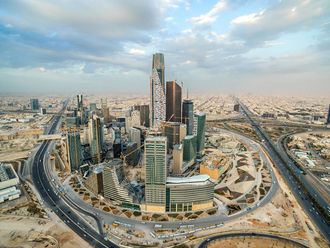The review of Opec’s World Oil Outlook 2017 does not end with what was discussed last week with respect to energy and oil’s supply and demand balances to 2040.
If demand for liquid fuels, including crude, is forecasted at 111 million barrel a day (mbd), then there is a need to expand the refineries to meet demand. The current refinery distillation capacity is about 97 mbd, but the expansion also requires meeting individual product demand and their evolving specifications. Hence the need for conversion, desulphurisation and octane improvement is part and parcel of the needed expansion.
Given product consumption trends and their outlook, refineries need to be complex and flexible to reduce less in-demand products such as heavy fuel oil in favour of producing the more in-demand light products. The WOO tells us that of the 15.8 mbd growth in oil demand up to 2040, “light products (ethane/LPG, naphtha and gasoline) are expected to satisfy more than 50 per cent of global demand growth”.
At the same time, demand for middle distillates (diesel and kerosene/jet) “is anticipated to increase by 6.8 mbd while that for heavy products increases only marginally by 0.5 mbd”.
This outlook coupled with product specification then sets the direction of future refinery expansion, where most of the demand for oil is used for all modes of transportation. The WOO says “it is the sector where oil continues to face the weakest competition from alternative fuels”. And this sector will account for “two out of every three additional barrels consumed”.
Sector growth
Only the road transportation sector oil demand is forecast to increase by 5.5 mbd by 2040, while aviation sector growth would be 2.9 mbd. Other transportation modes, including for large marine bunkers, are likely to expand by 1.9 mbd, which will have to be mostly in light desulphurized fuel according to the latest International Maritime Organization regulations. In the petrochemical and industrial sectors, growth is expected at 5.1 mbd.
Given the above outlook for product’s growth, the WOO says that “around 7.6 mbd of new refining capacity is likely to come online between 2017 and 2022, while 19.6 mbd of new refining capacity is expected between 2017 and 2040”. Asia-Pacific would add 9.5 mbd and the Middle East another 3.7 mbd and the remainder for the rest of the world.
Let us not forget that some of the oil demand will be satisfied by non-crude oil sources and, therefore, considering the under construction and planned projects may lead to the appearance of refinery capacity surpluses by 2022 in the developed countries. And even the Middle East, according to WOO.
This could lead to “higher competition in product markets” and “capacity closures, especially in developed regions”, where 2.5 mbd is expected to be shut between now and 2025 and further closure of 4-5 mbd in the longer run. Naturally, the closure would target old refineries that are uncompetitive or unable to meet product specification.
An expansion of distillation capacity would be coupled by the addition of secondary process facilities. The WOO expects “at the global level, projections indicate the need to add some 10.7 mbd of conversion units, 22.5 mbd of desulphurization capacity and just above 5 mbd of octane units in the period to 2040”.
Projected expansion
The refining industry in our region needs to be aware of these developments, in addition to the need for regional cooperation in planning, product exchange and other aspects that would lead it to be more profitable and able to compete in world markets.
There is no need to emphasise further the great expansion projected for the oil industry, upstream and downstream, irrespective of growth in other sources of energy. We need to appreciate the investment required to meet this promised expansion and the need for stable crude oil prices that would constitute the backbone of investment.
The WOO estimates upstream investment to 2040 at $7.9 trillion (Dh28.9 trillion) (in 2016 dollars) to account for increasing capacity not only to cover demand growth but to sustain current capacity reduced due to natural decline.
“Global supply needs are projected to be met [increasingly] by lower-cost Opec barrels”. Therefore, 20 per cent of global investment in the upstream sector would be in Opec countries “to ensure a reliable, stable and well-supplied oil market”.
Finally, WOO states that “Overall, in the period up to 2040 the required global investment in the oil sector is estimated at around $10.5 trillion. This includes the required investment in the downstream sector estimated at $1.5 trillion and in the midstream sector at $1.1 trillion.”
The Opec Secretariat remains optimistic that this investment can be met. Let us hope they are right.
The writer is former head of the Energy Studies Department at the Opec Secretariat in Vienna.












